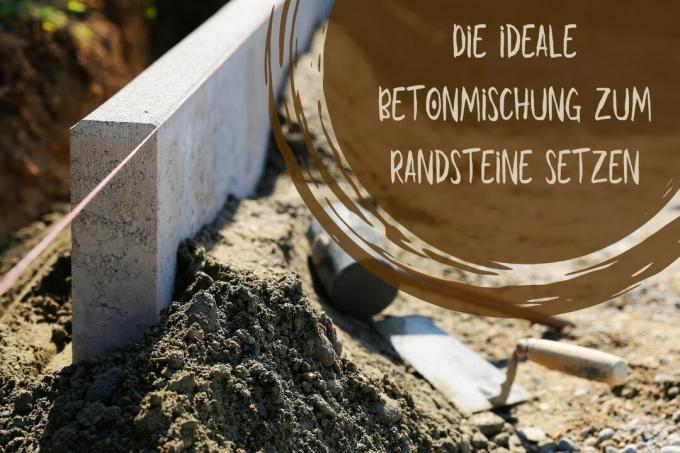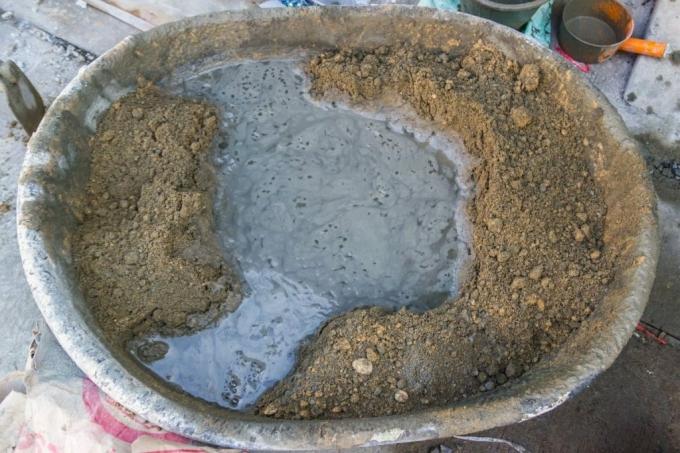
table of contents
- Ratio and amount
- The lean concrete
- The mixing ratio
- Sand or gravel?
- Compressive strength
- frequently asked Questions
Curbs are often used around the house and garden mission. So that the curbs will last for a long time, put them in concrete. The decisive factor is the mixing ratio of the building material.
In a nutshell
- Concrete consists of water, cement and sand or gravel
- Lean concrete is suitable for setting curbs
- the proportion of cement is lower in the case of lean concrete. The gravel / cement ratio is 8: 1
- independent mixing is no problem for small and medium-sized quantities
- add water sparingly so that the mixture is earth-moist
Ratio and amount
The building material concrete consists of three different components:
- water
- cement
- Sand gravel
The correct ratio of the components is crucial for the usability. Depending on the project, you have to calculate the amount required.

The lean concrete
Lean concrete is a type of concrete that has a low cement content. In addition to setting kerbstones, the concrete is suitable for the following areas of application:
- Set fence posts
- Place palisades
- Prepare the pavement bed
- Compensate for unevenness
- to lay pipes
Note: Many gardeners and do-it-yourselfers associate lean concrete with a liquid building material. However, this is rather dry and is processed earth-moist.
The mixing ratio
When producing the concrete for setting kerbstones, the mixing ratio is crucial. Gravel and cement should move in a ratio of 8: 1. First, put sand / gravel and cement in a container in the recommended mixing ratio. If necessary, mix in water until the consistency of the mixture is earth-moist.
Tip: Precise weighing is not required when mixing concrete. Use a shovel to make the concrete mix in an 8: 1 ratio. Gradually add water to the mixture!

Sand or gravel?
The grain size of gravel and sand should be between 0-8 mm. It depends on the application which grain size is best for the concrete mix. The coarser the grain, the more stable the concrete mix and the more reliable the curbs are. In addition, the drainage works better with coarse grains.
Compressive strength
The so-called lean concrete is pressure-resistant and is therefore suitable as a filling material. However, you should not fasten any important components with lean concrete. This neither meets the static requirements nor can it withstand strong pressure. However, setting curbs is not a problem.
Note: If you put the socket in a busy parking lot, you can think about more resilient concrete mixes. Lean concrete is usually sufficient for the home garden.
frequently asked Questions
When setting curbs, you should build a concrete foundation at a height of at least 10-15 cm. Use a rubber mallet to tap the stones so that they sink into the concrete. With a back support you increase the stability of your stones.
The in-house production depends on the quantity required. In the case of large quantities, there is no way around a concrete mixer, which you may need. can borrow. Manual mixing by hand or a simple mortar mixer is suitable for small and medium-sized amounts of concrete.



